By Kristina Rhoades
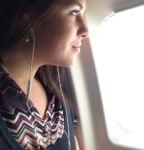 Cure Medical Advocate Kristina Rhoades has used a wheelchair since she was a toddler, and has traveled the world far and wide throughout her storied career. Below, Kristina shares some tips and tricks for both new and seasoned travelers on wheels.
Cure Medical Advocate Kristina Rhoades has used a wheelchair since she was a toddler, and has traveled the world far and wide throughout her storied career. Below, Kristina shares some tips and tricks for both new and seasoned travelers on wheels.
Traveling can be an exciting and rewarding experience – it’s an opportunity to experience the world. For some, it’s a mandatory part of their job, for many, a way to interact with loved ones that live far away and for others, it’s all about chasing adventure and immersing in different cultures. But, as fun as it can be, it can also be unpredictable, a bit complicated and sometimes, down-right frustrating. Add a wheelchair into the mix and one can almost count on (at least) an occasional challenge or two. However, with some preparation and a dash of experience it becomes much easier, and there can even be a few perks.
Cure Advocate Kristina Rhoades Shares Her accessible Travel Tips

Be sure to pack enough medical supplies for your trip, and to take some with you in your carry-on bag.
I’ve been traveling in a wheelchair all of my life, but for the last five years, I’ve taken an average 20-30 flights per year – most of them completely independent.
I’ve rolled through airports, big and small, all over the U.S. and even outside our borders. Here are some helpful tips I’ve picked up along the way that will hopefully help you on your future journeys.
Preparation is key.
Good preparation starts with the packing. Lighter is better, but we’ll cover this in the next section. What you need to remember here is that if you’re checking a bag, make sure to bring a carry-on that has all your essentials in it.
It’s a good idea to hang on to enough catheters, medications and any other necessities to last a couple days, just in case there’s a problem with your checked bag.
Most people have emergency contact numbers, including family and doctors in their cell phone, but it’s also smart to keep that info written down, as well as details about allergies or medical alerts.

A seasoned business traveler, Kristina is sharing the accessible travel tips that have served her well too.
When making your flight or transportation reservation, you’ll want to notify the airline that you use a wheelchair. They may ask for dimensions to make sure they can accommodate it on your specific plane. Usually this isn’t an issue, but in rare cases, larger power chairs can’t be accommodated on very small planes.
At check-in, if you’re not able to walk on to the plane, you’ll want to indicate to the agent that you’ll need an “aisle chair.” Once in a while they may ask if you want to check your chair at baggage, but chances are you’ll want to ride your own chair all the way to the plane – otherwise known as a “gate check.”
You’ll want be be thoroughly educated about the airport and transportation before heading to your flight. Be sure to budget plenty of time for any unexpected delays, especially if you plan to self-park. If you’re not familiar with your departure airport, do a little research and see if there are shuttles from parking or anything else that may be useful to know.
Often, airport shuttles are not accessible, so calling ahead may be a good idea.
If you’re able to roll from the parking deck, the hourly parking is usually way closer to the terminal than daily parking – but know that it can cost significantly more per day. However, some airports offer discounts for all wheelchair parking, so be sure to present your placard when leaving to see what you can save.

Some airports offer discounts for all wheelchair parking, so be sure to present your placard when leaving to see what you can save.
Mastering your luggage.
Managing luggage in a wheelchair is all about being creative and having the right bags. An easy option for light-packers is a duffle-type bag or backpack that can either go in your lap or on your back. However, if a small bag won’t cut it, a suitcase with four wheels is my go-to. They can be easily pushed (with one hand, like a shopping cart or stroller) or pulled (with some kind of strap or attachment on the back of your chair). Just be sure the wheels work well!
Depending on the size of the bag, some two-wheeled styles can be pushed, but I’ve found them much more difficult to maneuver. If you’re not sure, do some tests at your house before you head to the airport (with the bags full) so you have an of idea what works best.
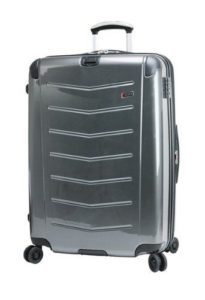 If you think you’ll need help with your luggage, you may to have someone drop you off at the airport departure lane and you’ll most likely be able to request assistance at the curbside counters. If necessary, a designated airport employee can actually accompany and assist you through the entire checking-in and boarding processes. Upon arrival, the “bellhops” waiting around baggage claim can also help you out to your car or taxi, but be prepared that most will expect a tip.
If you think you’ll need help with your luggage, you may to have someone drop you off at the airport departure lane and you’ll most likely be able to request assistance at the curbside counters. If necessary, a designated airport employee can actually accompany and assist you through the entire checking-in and boarding processes. Upon arrival, the “bellhops” waiting around baggage claim can also help you out to your car or taxi, but be prepared that most will expect a tip.
The ins and outs of security.
If you’re modest, you’re not going to be a big fan of the airline security process. Since those of us in wheelchairs are not able to go through the metal detectors, we get the old “pat-down.” After dropping your carry-on items on the x-ray belt, you’ll be ushered through a little gate, where a TSA agent (of your same gender) will check you and your wheelchair by hand.
After you’ve located your carry on bags, you’ll be guided to a designated screening area. They agent will give you a little speech about the process and ask questions about medical implants, sensitivities and give you the option for a private screening. They’ll also most likely swab your hands and wheelchair to test for dangerous chemicals.
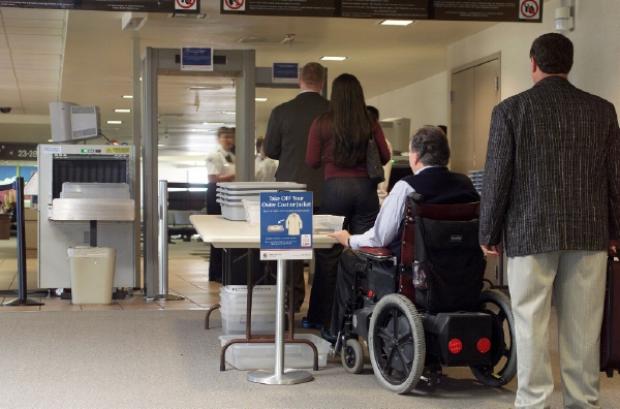
It’s important to remember that you are your best advocate and if at any point you feel uncomfortable, you should calmly let someone know that.
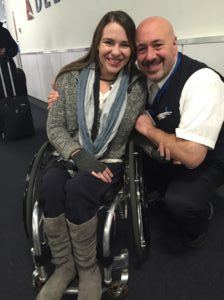 At times this process can be a bit frustrating, especially if you travel often. Sometimes there’s a long wait or sometimes you get an agent that is extremely awkward around you, so it always helps to keep in mind that it’s all done to keep us safe.
At times this process can be a bit frustrating, especially if you travel often. Sometimes there’s a long wait or sometimes you get an agent that is extremely awkward around you, so it always helps to keep in mind that it’s all done to keep us safe.
A tip? Look for a special entrance when going through security because many airports allow wheelchairs to bypass the long line.
Also, if you are a frequent traveler, I’d definitely recommend looking into TSA PreCheck, which can greatly expedite the security screening process.
Learning the process and voicing your needs.
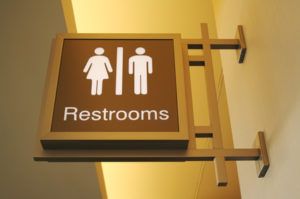
Don’t forget to use the restroom before you take off, especially if you have a long flight. Remember, you will be the first person on and the last person off of the plane due to special boarding.
No one knows what kind of assistance you need unless you tell them. They also may not realize that they may do more harm than good if they try to assist you when you don’t need it.
For example, agents sometimes try to insist on pushing me down the jet way to the airplane. But, I feel much more comfortable wheeling down alone, so I often have to become a bit assertive to assure them I can handle it.
It’s always a good idea to make yourself known when you arrive at the gate, too. They’ll want you to stay close as wheelchair passengers board first, and they’ll also need to put a gate-check tag on your chair.
The gate agent can also move your seat if you’re seated somewhere that won’t work for you, like an emergency row or too far back in the plane.
When boarding, be sure to double-check your wheelchair!
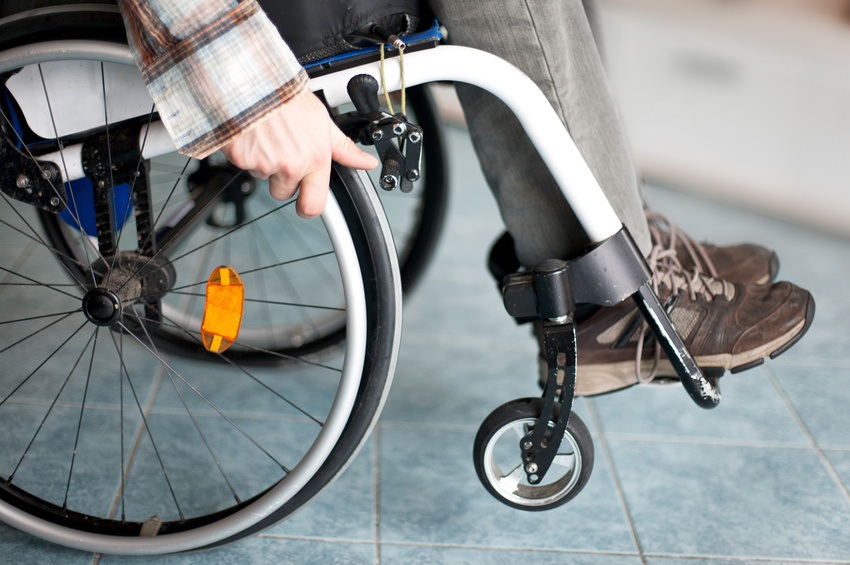
Many people take their chair cushion on the plane with them and use it for extra padding on the flight. It also makes sure that your cushion doesn’t get lost in transport.
Remember to pull off any loose parts that could get lost, like a seat, armrests or a bag, and communicate any special care that needs to be taken.
Get ready to be buckled up like a race car driver in the “aisle chair”, which is the skinny transfer chair they use to get us on the plane. When in your seat, ask to store your carry-on under the seat in front of you since getting up to get it out of the overhead may not be possible for you.
Bonus Tip for Catheter Users
The Cure Medical products that I use make traveling SO much easier. My favorites are the Cure Twist catheters, because they don’t take up a lot of room or make a mess, and the M14XL’s, which are extra long and allow me to avoid transfers and extension tubes in public restrooms!
Friends of mine also find the Cure Medical Closed Systems useful for traveling.
To learn more and find out what works best for you, visit Cure Medical’s product page.
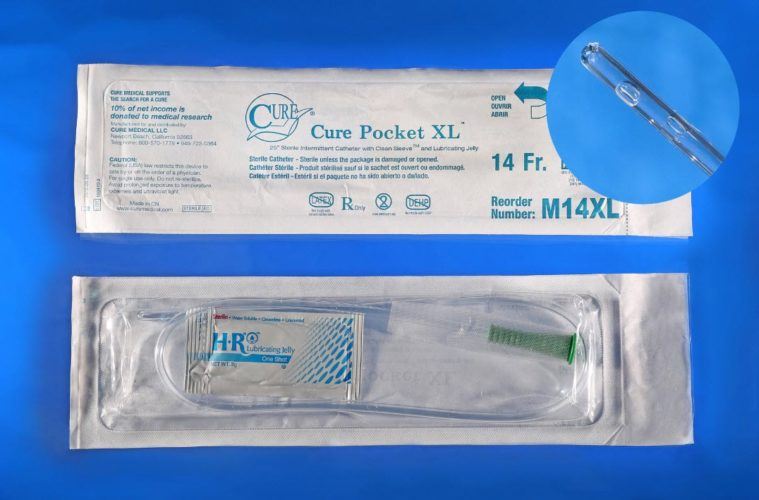
Kristina prefers the Cure Twist ready-to-use catheter as well as the Extra Long Cure Catheter (pictured above) that help her avoid transfers and the need to use extension tubes in public restrooms. You can request a free sample of both using the Cure Medical Sample Request form.
All in all, traveling can be a great experience, regardless of whether or not you use a wheelchair. After a few flights, it’s a piece of cake. When in doubt, ask for help and speak up for yourself.
My last piece of advice – and maybe the most important – is that a lot of patience and a smile goes a long way.
Best of luck and bon voyage! 
Want more information?
It’s important in these times to know your rights! Click to get a summary of the Air Carrier Access Act to learn more.
Keep an eye out for Kristina’s next story, Accessible Travel: Part Two, that will focus on ground transportation!
Enjoy Our Free Resources & Articles
 CURE NATION is designed with you in mind, to offer assistance and education when you need it through a personal support program.
CURE NATION is designed with you in mind, to offer assistance and education when you need it through a personal support program.
All of the information you find below and on our related social media pages is meant to guide you to places, topics and, resources that enhance your life, while also connecting you with a growing group of friends.
- Sign up for our free, CURE NATION e-newsletter to have our latest stories delivered directly to you, once a month.
- Get our FREE LIFESTYLE + TRAVEL BOOKS here.
- Have an idea you’d like to share? Let us know.
- Be sure to take a minute to meet our Cure Advocates too.
You may also enjoy:
Dealing with Strictures: Why Rick Hayden Chooses a Cure Catheter
Michael Zannakis Shares His Story of Love + Adventure After SCI
SCI Motivated Martha Childress to Pursue a Career in Occupational Therapy
Srin Madipalli Can Help You Find an Accessible AirBnB
Kim Harrison Fights for Disability Rights and Healthcare Access
Wheels UP! Adaptive Winter Sports You’ll Love
Accessible U.S. Travel Guide: Visiting Virginia on Wheels
How You Can Help Hurricane Harvey Victims Who Have Medical Needs

